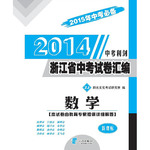题目内容
D
Let us suppose it is now about A.D. 2060. Let’s make believe (假装;虚构) it is about sixty years from now. Of course, things have changed and life is very different.
Voyages to the moon are being made every day. It is as easy to take a holiday on the moon today as it was for the people in 1960 to take a holiday in Europe. At a number of scenic spots on the moon, many hotels have been built. The hotels are air-conditioned, naturally. In order that everyone can enjoy the beautiful scenery on the moon, every room has at least one picture window. Everything imaginable is provided for entertainment (娱乐) of young and old.
What are people eating now? People are still eating food. They haven’t yet started to take on heir (继承) supply of energy directly as electrical current or as nuclear power. They may some day. But many foods now come in pill form, and the food that goes into the pill continues to come mainly from green plants.
Since there are several times as many people in the world today as there were a hundred years ago, most of our planet’s surface has to be filled. The deserts are irrigated with water and crops are no longer destroyed bypests. The harvest is always good.
Farming, of course, is very highly developed. Very few people have to work on the farm. It is possible to run the farm by just pushing a few buttons now and then.
People are now largely vegetarians (素食者). You see, as the number of people increases, the number of animal decreases. Therefore, the people have to be vegetarians and we are healthier both in our bodies and in our minds, and we know the causes and cure of disease and pain, and it is possible to get rid of diseases. No one has to be ill any more.
Such would be our life in 2060.
1.When was the passage written?
A. In about A.D. 2060. B. In about 1960.
C. In about 2004. D. In about 2000.
2. According to the passage, what will be on the moon in about A.D. 2060?
A.Many other animals. B.Many tourists.
C. Many plants. D. A sea.
3.What will people eat then according to the passage?
A. Foods in pill form. B.Biscuits in pill form.
C.Foods in water form. D. Foods in gas form.
4.The passage tells us that in 2060, ____ on the earth than now.
A. there are fewer population
B. there are more pests
C. the crops are getting better
D.there is less water
 中考利剑中考试卷汇编系列答案
中考利剑中考试卷汇编系列答案 教育世家状元卷系列答案
教育世家状元卷系列答案书面表达
五一小长假即将来临, 你班同学就五一假期计划进行讨论,提出了不同看法,请根据提示写一篇短文,并谈谈你的看法。
优 点 | 缺 点 | |
待在家中 | 花费少、舒适方便 | 不能亲身了解外界 |
外出旅游 | 增长知识、开阔眼界 | 花费多、旅途不便 |
注意:
1 .词数100左右(不含已写好部分)。
2. 短文必须包括表中所列要点,可根据内容分段表述。
3. 可适当增加细节,以使行文连贯。参考词汇:眼界horizon (view)
The May Day is coming. Our class has a discussion about what to do during the holiday.______
Welcome to the Electronic Village to explore new ways of language teaching and learning.
Electronic Village Program (Thursday, June 18, 2015) | |
Nearpod ? 9:00 am to 10:00 am ? Room 501 Nearpod is a software program that creates a rich context (语境) for students to learn vocabulary. The presenter will show how to use it. | TEO ? 2:00 pm to 3:00 pm ? Room 502 Our students come from different backgrounds but have the same desire to learn on-line. The presenter will use examples from his first on-line class to explain how any teacher can begin teaching on-line with TEO. |
Kahoot ? 10:30 am to 11:30 am ? Room 601 Kahoot software can be used to create grammar tests which can be graded on a network. It can provide students with instant feedback (反馈), including reports about their strengths and weaknesses. | Prezi ? 3:30 pm to 4:20 pm ? Room 602 Uses of Prezi in listening and speaking courses draw students' attention to speaking more fluently. The presenter will show how students can use Prezi to confidently present on a variety of topics, including introducing family, friends, and hobbies. |
1.Nearpod can be used to ______.
A. offer grammar tests
B. teach listening on-line
C. help vocabulary learning
D. gain fluency in speaking
2.If you want to improve your speaking skills, you can go to____________.
A. Room 501 B. Room 502 C. Room 602 D. Room 601
3.A teacher who wants to learn on-line teaching is expected to arrive by ______.
A. 9:00 am B. 10:30 am C. 3:30 pm D. 2:00 pm

